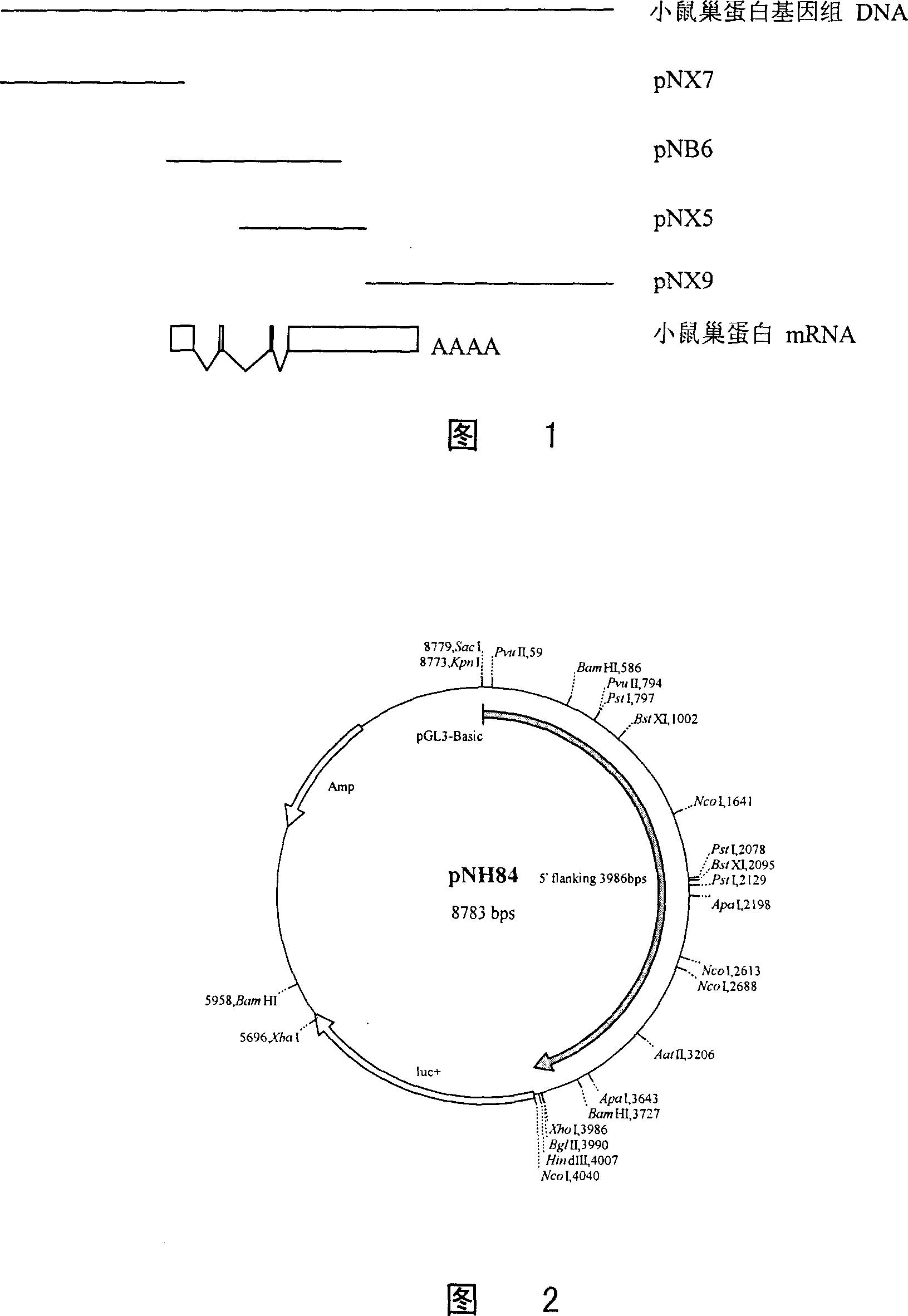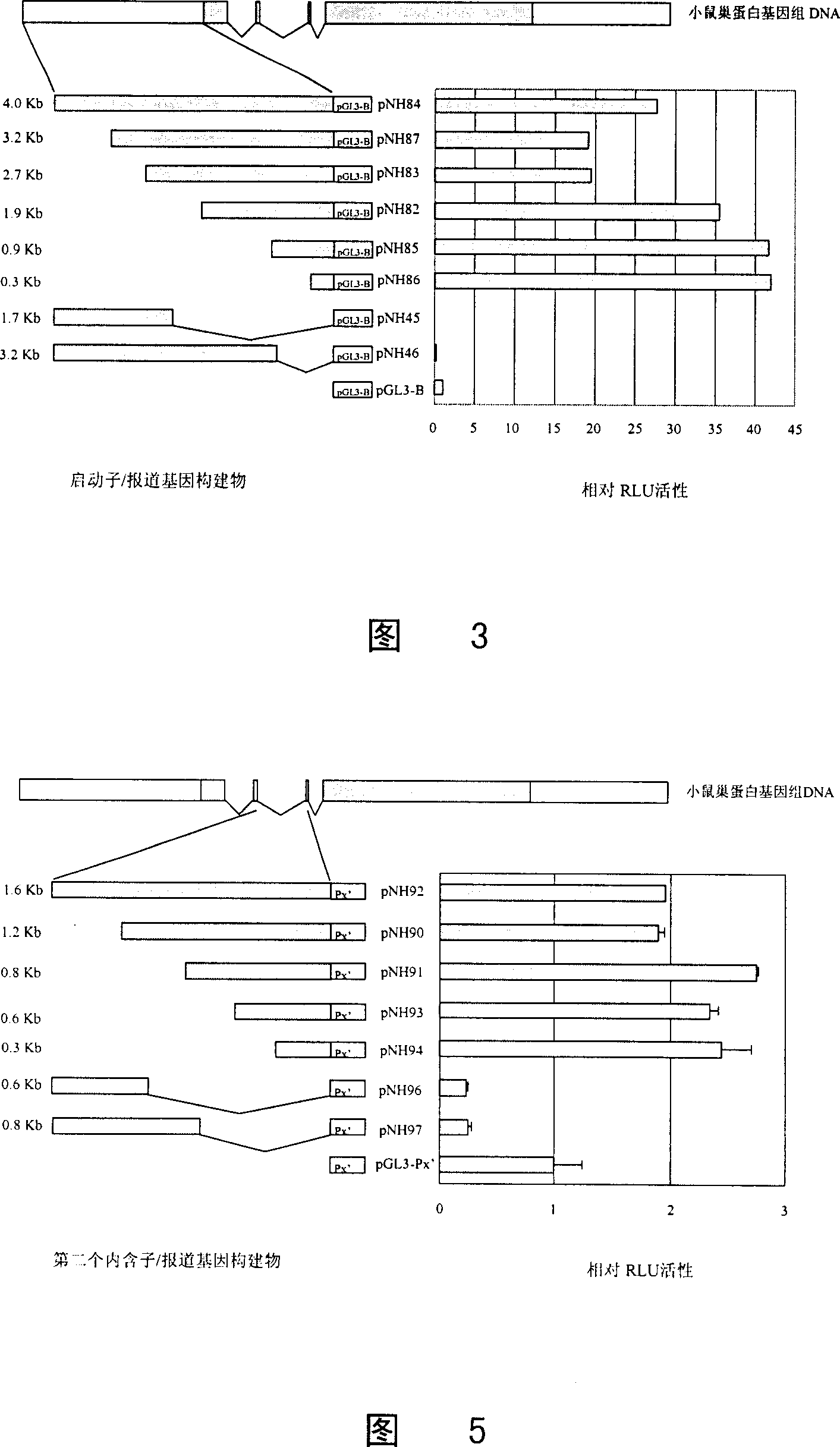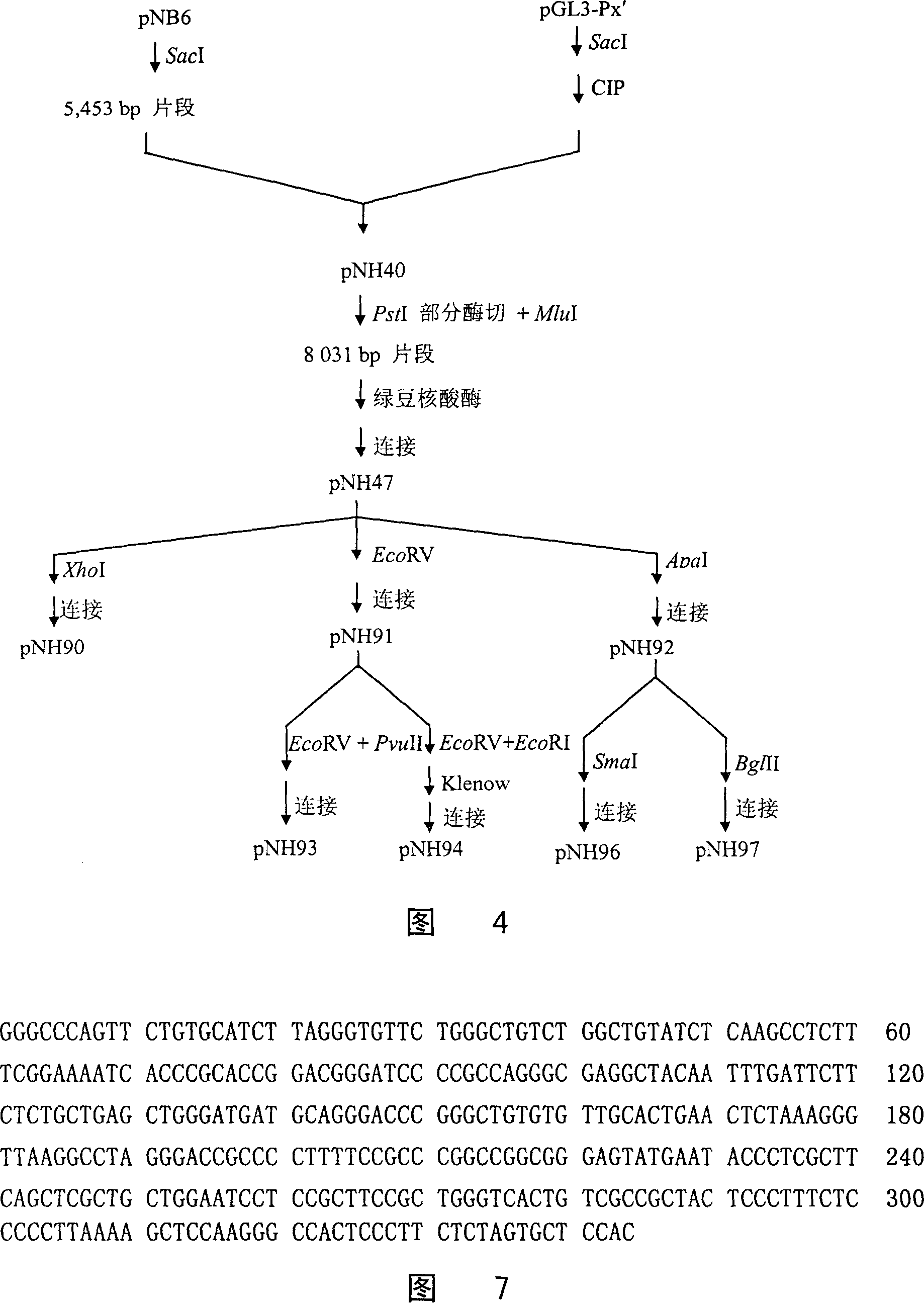Mouse nidogen gene starter and its tissue specificity enhancer
A technology of promoter and nestin, which is applied in the fields of molecular biology and DNA recombination, can solve the problem of not obtaining the regulatory sequence of mouse nestin gene sequence and so on.
- Summary
- Abstract
- Description
- Claims
- Application Information
AI Technical Summary
Problems solved by technology
Method used
Image
Examples
Embodiment 1
[0053] Acquisition of mouse nestin cDNA sequence and genome sequence
[0054] Using the mouse nestin antibody (Jing N.H., Kitani H., et al., 1996, Chinese Journal of Physiological Sciences, Vol 12, p1-8) prepared by us, screen the mouse neural precursor cell cDNA library to obtain the mouse Nestin gene cDNA 3' end 3.6 Kb (M5). The 10-day mouse whole embryo cDNA library constructed by conventional methods was screened with the fragment of 740bp (2402-3143 nucleotides) at the 5' end of M5 to obtain the full-length sequence of the cDNA 5983bp of mouse nestin (mouse nestin gene cDNA GenBank accession no. AF076623).
[0055] A bacterial artificial chromosome (BAC) clone of the nestin gene was obtained by using the PCR screening method of the genome library. Southern hybridization was performed using DNA fragments at positions 1-1203 and positions 5427-5983 at the 5' end of the mouse nestin cDNA sequence as probes. The present inventors obtained four positive clones capable of sp...
Embodiment 2
[0058] Identification of the nestin promoter element
[0059] Mouse embryonic carcinoma cell P19 is a pluripotent cell line with normal male mouse karyotype, at 10 -6 Under the induction of mol / L retinoic acid (RA), it can differentiate into nerve cells. During this process, the expression patterns of neurodevelopment-related genes basically simulated the normal mouse neurodevelopment process. Therefore, P19 cells are currently used as an in vitro experimental model to study neurodevelopment in mice. By analyzing the expression of nestin gene in different stages of mouse embryonic development and in the process of neural differentiation of embryonic carcinoma cells (Embryonal Carcinoma, EC) P19 induced by retinoic acid (RA), the present inventors found that nestin The expression pattern of the gene in the process of P19 neural differentiation is similar to the expression pattern of the gene in animals.
[0060] The regulatory sequence of the mouse nestin gene was constructe...
Embodiment 3
[0073] Identification of nestin enhancer elements
[0074] In order to verify whether the second intron of the mouse nestin gene has the characteristics of the specific expression of the central nervous system, the inventors first detected its activity in regulating the transcription of the reporter gene in vitro.
[0075] In the process of constructing a series of deletion plasmids for transfection, the plasmid pGL3-Promoter with reporter gene luciferase was transformed first. After pGL3-Promoter was digested with XhoI, it was filled in with Klenow enzyme, and then self-ligated to eliminate the XhoI site. To facilitate the construction of a series of deletion plasmids, the multiple cloning site between SacI and KpnI on pBluescript II SK(-) was constructed into pGL3-Promoter with the XhoI site removed, and the plasmid was named pGL3-Px'.
[0076] The 2nd intron of the nestin gene was from clone pNB6. See Figure 4 for the construction process of the serial deletion plasmids. ...
PUM
 Login to View More
Login to View More Abstract
Description
Claims
Application Information
 Login to View More
Login to View More - R&D
- Intellectual Property
- Life Sciences
- Materials
- Tech Scout
- Unparalleled Data Quality
- Higher Quality Content
- 60% Fewer Hallucinations
Browse by: Latest US Patents, China's latest patents, Technical Efficacy Thesaurus, Application Domain, Technology Topic, Popular Technical Reports.
© 2025 PatSnap. All rights reserved.Legal|Privacy policy|Modern Slavery Act Transparency Statement|Sitemap|About US| Contact US: help@patsnap.com



